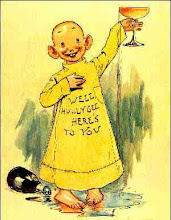
Who’d have thought laughter had such scope for theorizing. “But theorize or perish”, as all foolhardy people say.
So that’s how it is with Art Spiegelman. When you reach his stage of penetration and possession of one’s art, then you try and add to the art’s longevity by adding to its understanding. When you’ve taught your dog all the tricks, then you are left with nothing but to sit and talk to it.
Before I go into the specific interest I have in something he has to say, let me first advise you to read a book of his called ‘Breakdowns’. It is now available in India, and surprisingly cheap at that (Rs 499, distributed by Penguin India) (believe me that’s cheap, and original, printed price is ₤20, or Rs 1600) (and it’s a large hardcover).
The book, trippy ride through S’s hammering, blasting, and piercing of the medium of comics, or ‘sequential art’. Reading this book is like watching a Bunuel movie, nothing is as we expect it to be. So the same frame is repeated with minor/major variations just to experience a range of reactions to essentially the same framework: different ways of seeing/saying the same thing.
But the section that is most enlightening is a graphic lecture “Cracking Jokes: A brief enquiry into various aspects of humour”. It is an enquiry into the definition and application of joke theory. And the most significant point he makes is that jokes, however refined, is a form of aggression. Do you agree?
I am swayed to, as jokes always have a punchline, do they not? Somebody gets punched. “Some buddy a gonna get-a hurt real bad.” What we have is a ‘skilful balance between aggression and affection” S slips into some Freudian sections, that are hard to accept and yet hard to accept, I will leave it at the “iski toh kat gayi” response to a joke at someone’s expense, and you fill in the blanks with Freud.
The other thing that he achieves, apart form the joke’s malignant nature, is the joke’s inherent technique that requires mastery which is invisible behind its delivery, and is yet a specialization. An art (pun not intended, but welcome). Jokes aren’t thoughtless words, casually spoken, but deliberate steps, paces, and a final jump that either crosses the bar or falls flat.
I leave you with this quote by another comics artist/theorist, Scott McCloud: "Comics is a powerful idea, but an idea that's been squandered, ignored and misunderstood for generations. No art form has lived in a smaller box than comics for the last hundred years. It's time for comics to finally grow up and find the art beneath the craft."
So that’s how it is with Art Spiegelman. When you reach his stage of penetration and possession of one’s art, then you try and add to the art’s longevity by adding to its understanding. When you’ve taught your dog all the tricks, then you are left with nothing but to sit and talk to it.
Before I go into the specific interest I have in something he has to say, let me first advise you to read a book of his called ‘Breakdowns’. It is now available in India, and surprisingly cheap at that (Rs 499, distributed by Penguin India) (believe me that’s cheap, and original, printed price is ₤20, or Rs 1600) (and it’s a large hardcover).
The book, trippy ride through S’s hammering, blasting, and piercing of the medium of comics, or ‘sequential art’. Reading this book is like watching a Bunuel movie, nothing is as we expect it to be. So the same frame is repeated with minor/major variations just to experience a range of reactions to essentially the same framework: different ways of seeing/saying the same thing.
But the section that is most enlightening is a graphic lecture “Cracking Jokes: A brief enquiry into various aspects of humour”. It is an enquiry into the definition and application of joke theory. And the most significant point he makes is that jokes, however refined, is a form of aggression. Do you agree?
I am swayed to, as jokes always have a punchline, do they not? Somebody gets punched. “Some buddy a gonna get-a hurt real bad.” What we have is a ‘skilful balance between aggression and affection” S slips into some Freudian sections, that are hard to accept and yet hard to accept, I will leave it at the “iski toh kat gayi” response to a joke at someone’s expense, and you fill in the blanks with Freud.
The other thing that he achieves, apart form the joke’s malignant nature, is the joke’s inherent technique that requires mastery which is invisible behind its delivery, and is yet a specialization. An art (pun not intended, but welcome). Jokes aren’t thoughtless words, casually spoken, but deliberate steps, paces, and a final jump that either crosses the bar or falls flat.
I leave you with this quote by another comics artist/theorist, Scott McCloud: "Comics is a powerful idea, but an idea that's been squandered, ignored and misunderstood for generations. No art form has lived in a smaller box than comics for the last hundred years. It's time for comics to finally grow up and find the art beneath the craft."


